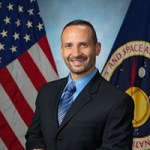This year will be a “BIG” year for several college and university teams as they research, design, and demonstrate novel inflatable systems configured for future lunar operations through a NASA-sponsored engineering competition.
NASA’s Breakthrough, Innovative and Game-Changing (BIG) Idea Challenge asked student innovators to propose novel inflatable component and system concepts that could benefit future Artemis missions to the Moon and beyond.
The Inflatable Systems for Lunar Operations theme allowed teams to submit various technology concepts such as soft robotics, deployable infrastructure components, emergency shelters or other devices for extended extravehicular activities, pressurized tunnels and airlocks, and debris shields and dust protection systems. Inflatable systems could greatly reduce the mass and stowed volume of science and exploration payloads, critical for lowering costs to deep-space destinations.
Award values vary between ~$100,000 and $150,000 and are based on each team’s prototype and budget.
The 2024 BIG Idea Challenge awardees are:
| Arizona State University | Tempe, Arizona | Aegis – Inflatable Lunar Landing Pad System | Advisors: Tyler Smith, Dr. James Bell, James Rice, Josh Chang |
| Brigham Young University | Provo, Utah | Untethered and Modular Inflatable Robots for Lunar Operations | Advisors: Dr. Nathan Usevitch, Dr. Marc Killpack |
| California Institute of Technology, with NASA Jet Propulsion Laboratory, Cislune and VJ Technologies | Pasadena, California | PILLARS: Plume-deployed Inflatable for Launch and Landing Abrasive Regolith Shielding | Advisors: Dr. Soon-Jo Chung, Kalind Carpenter |
| Northwestern University, with National Aerospace Corporation | Evanston, Illinois | METALS: Metallic Expandable Technology for Artemis Lunar Structures | Advisors: Dr. Ian McCue, Dr. Ryan Truby |
| University of Maryland | College Park, Maryland | Auxiliary Inflatable Wheels for Lunar Rover | Advisor: Dr. David Akin |
| University of Michigan | Ann Arbor, Michigan | Cargo-BEEP (Cargo Balancing Expandable Exploration Platform) | Advisor: Dr. John Shaw |
Once funded, finalist teams continue designing, building, and testing their concepts, which could lead to NASA innovations that augment technology currently in development. Work performed by the teams culminates in a final technical paper, prototype demonstration, and potential opportunity to present in front of a diverse panel of NASA and industry experts.
As a program affiliated with NASA’s Lunar Surface Innovation Initiative (LSII), the BIG Idea Challenge incubates new ideas from the future workforce. Through the challenge, student teams aid LSII’s mission to advance transformative capabilities for lunar surface exploration across NASA’s Space Technology portfolio.
Niki Werkheiser
Director of Technology Maturation at NASA
Since its inception in 2016, the challenge has invited students to think critically and creatively about several defined aerospace topics, including extreme terrain robotics, lunar metal production, Mars greenhouse development, and more. Each year, the theme is tied directly to a current aerospace challenge NASA is working on.

Tomas Gonzalez-Torres
NASA’s Space Grant project manager
The BIG Idea Challenge is one of several Artemis student challenges sponsored through NASA’s Space Technology Mission Directorate’s Game Changing Development (GCD) program and the agency’s Office of STEM Engagement Space Grant Project. It is managed by a partnership between the National Institute of Aerospace and The Johns Hopkins Applied Physics Laboratory.
BIG Idea supports GCD’s efforts to rapidly mature innovative and high-impact capabilities and technologies for possible infusion in future NASA missions, while creating a rewarding student and faculty experience. The 16-month intensive project-based program supports innovations initiated and furthered by the student teams that can possibly be adopted by NASA, and it works to endeavor ambitious new missions beyond Earth.
Learn more about this year’s BIG Idea Challenge